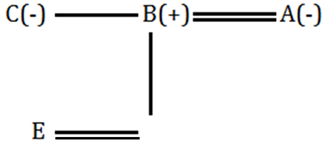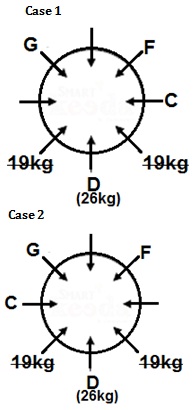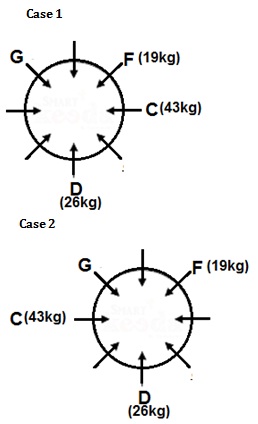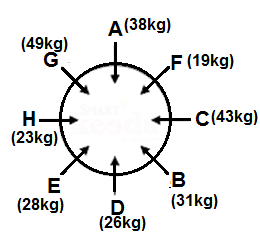Solutions
First we have to determine Blood relation tree.
C is the sister of B. B is husband of A. A is mother-in-law of E and sister-in-law of C.

F and D are sister-in-law of each other, this confirms both to be female. As B is the father of D. E is son of G and F is the daughter of G. E is the husband of D. H is the husband of F. E and F are siblings.

D is of 26 kg. The weighing 26 kg and 19 kg are not immediate neighbors. Only one person sit between D and C members. G sits third to the left of D. F sits second to the left of G. Following two cases-

B who is the fourth highest weighted in the group is immediately heavier than E but immediately lighter than A . C is neither the heaviest not the lightest. The sum of C and F is 62 kg.
So, the weight of B is 31 kg, who is immediate heavier than E i.e. 28 kg. and immediate lighter than A i.e. 38 kg.
Weight of C can’t be either 49 kg. Or 19 kg.
So it’s weight should be among the remaining weights – 19, 23 and 43 kg.
With the available options, the only combination that makes the sum of 62 kg is 19 and 43.
So the weights of F and C members are 19 and 43 kg respectively.

B sits third to the left of the person whose weight is 38 kg. The one whose weight is 38 kg is neighbor of both F and G. H sits second to the right of A. Thus case2 gets eliminated, as position of C and H clashes here. We have already derived the weight of A as 38 kg, weighing 49 kg is second to the left of E. The remaining vacant position is assigned to E , who ascertains the weight of H as 43 kg and G as 49 kg.




 Get latest Exam Updates
Get latest Exam Updates 





 ×
×






